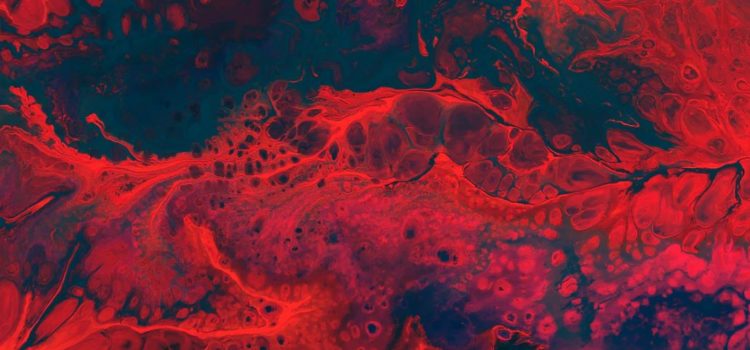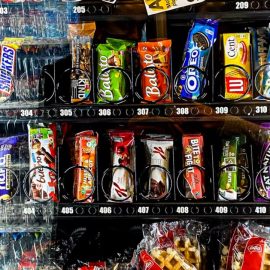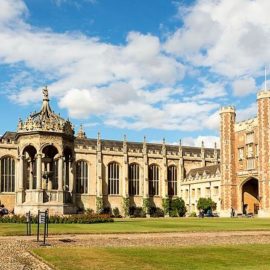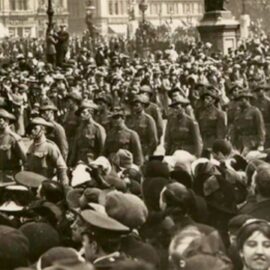

This article is an excerpt from the Shortform summary of "The Immortal Life of Henrietta Lacks" by Rebecca Skloot. Shortform has the world's best summaries of books you should be reading.
Like this article? Sign up for a free trial here .
Who is Christoph Lengauer? How did he use HeLa cells to pain other cells? How did the family of Henrietta Lacks feel about Dr. Lengauer contacting them?
Christoph Lengauer is a scientist that created a method that revealed more parts of the DNA in a chromosome. The technique used HeLa cells to “paint” with fluorescent dye.
Learn about Christoph Lengauer, Henrietta Lacks’ cells, and the revolutionary technique.
Christoph Lengauer “Paints” With HeLa
Skloot had published an article on the Lacks men in Johns Hopkins Magazine, and a Hopkins cancer researcher named Christoph Lengauer had read the article and gotten in touch with her. Lengauer had used HeLa cells to develop a technique for “painting” chromosomes with fluorescent dye, which, when viewed under fluorescent light, revealed aspects of the DNA that wouldn’t otherwise be detectable. Christoph Lengauer wanted to thank the Lacks family for Henrietta’s contribution to science, so he framed a picture of HeLa cells brilliantly lit by fluorescent light and gave it to Skloot for Deborah.
With the present from Christoph Lengauer, Henrietta Lacks’ cells were represented in a new way. Deborah was delighted and expressed her desire to learn as much as she could about HeLa cells. Then she dumped out her bag onto the bed: She’d brought along the results of her own research into Henrietta Lacks—newspaper clippings, journal articles, and videotapes with uncut footage from the BBC documentary, among other items.
Deborah’s Perspective
Soon it became clear that Deborah didn’t distinguish completely between science fiction and reality. When she told Skloot that there were women walking around London that looked just like her mother, she presented as evidence not only a newspaper article that spoke about the cloning of HeLa cells but also videotapes of Jurassic Park and another movie called The Clone.
And they spent hours together on Skloot’s bed in her B&B, poring over articles and documents concerning Henrietta. One day, when Skloot noticed a sizable manila folder on her pillow, she reached for it, asking Deborah if it was Henrietta’s medical records. Deborah screamed and dived onto the folder, and in an instant she’d packed her bag and was speeding toward the door. As she left, she told Skloot she didn’t know who to trust.
Zakariyya‘s Perspective
Then Deborah stood and led the group back outside to the car. She dug into the trunk of her jeep and emerged with Christoph Lengauer’s Henrietta Lacks’ cell photo that was made for the family. She gave it to Zakariyya, and Skloot mentioned that Lengauer had invited the family to visit his lab. Zakariyya softened for the first time all day. With tears in his eyes, he said that the family should accept Dr. Lengauer’s invitation.
Dr. Lengauer’s Lab
A month later Deborah, Zakariyya, and Skloot met on Hopkins campus to visit Christoph Lengauer’s lab. The others Skloot had invited weren’t in attendance. Even though Day had long wanted to see his wife’s cells, he wasn’t able to join them. His health was in bad decline—he was eighty-five, had heart problems and high blood pressure, and had had a leg amputated due to Diabetes. Sonny had to go to his job, and Lawrence, for his part, had become convinced that Skloot was working with Hopkins to spy on the family.
Taking visitors to the freezer room was the first stop on the tour with Christoph Lengauer. Henrietta Lacks’ cells were stored there. Lengauer approached a particular floor-to-ceiling freezer and opened it, releasing a cloud of vapor. Inside the freezer were thousands of vials, each filled with HeLa cells.
Dr. Lengauer explained that there was always the danger of contamination—which Deborah knew about from her research—then gave Deborah a vial to hold. She began blowing on it and warming it between her hands, saying that her mother was cold.
Their next stop was the small lab where Lengauer incubated HeLa cells. There were gallon-sized jugs in the room, and he explained that, once the cells were incubated, they would start growing indefinitely, filling the jugs. He removed a dish of cells from the incubator and placed it under a microscope. The microscope was fitted with a monitor, and as Lengauer increased the magnification, the HeLa cells came into greater focus.
Deborah asked about the difference between DNA and cells, and Lengauer explained that DNA were in the cells, in the cell’s nucleus. He also explained how Henrietta’s cancer developed: Her HPV virus caused a change in her cells’ DNA that turned them cancerous. When it became clear that Deborah thought some of the cells they were looking at were normal and others cancerous, Lengauer informed her they were all cancerous.
After a bit of searching, Lengauer was able to find a cell in the middle of dividing. Zakariyya and Deborah were transfixed. The conversation shifted to Hopkins’s ill-treatment of the Lackses, and Lengauer agreed with Deborah and Zakariyya that Hopkins had done wrong by them. Showing them the catalog from which he ordered HeLa cells, which were priced at $167 a vial, he compared the cells to crude oil and said the Lackses should be getting at least a cut of the proceeds.
As of 2009, Christoph Lengauer, the Hopkins scientist who invited the Lacks family to visit his lab, worked for Sanofi-Aventis, a multinational pharmaceutical company, where he was global head of oncology drug discovery.

———End of Preview———
Like what you just read? Read the rest of the world's best summary of Rebecca Skloot's "The Immortal Life of Henrietta Lacks" at Shortform .
Here's what you'll find in our full The Immortal Life of Henrietta Lacks summary :
- How Henrietta's cells became used in thousands of labs worldwide
- The complications of Henrietta's lack of consent
- How the Lacks family is coping with the impact of Henrietta's legacy






